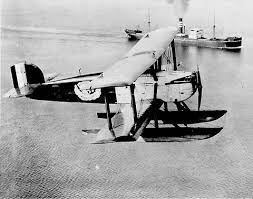On September 28, 1924, a momentous aviation feat was achieved when the first round-the-world flight was completed after 175 days of arduous travel. This historic journey marked a significant milestone in the progress of aviation and demonstrated the remarkable capabilities of early aircraft and adventurous aviators. The ambitious round-the-world flight was undertaken by four United States Army Air Service planes, known as the "World Fliers." Led by Lieutenant Lowell H. Smith, the team set out from Seattle, Washington, on April 6, 1924, with the goal of circumnavigating the globe and completing the journey within 30 days. The World Fliers encountered numerous challenges and obstacles throughout their journey. The primitive aircraft of the time were not designed for long-distance travel, and the pilots faced treacherous weather conditions, mechanical failures, and navigational difficulties. They also encountered cultural differences and bureaucratic hurdles as they passed through various countries. Despite the setbacks, the World Fliers persevered, showcasing their determination, skill, and resourcefulness. They relied on a combination of celestial navigation, maps, and local assistance to navigate their way across the vast stretches of land and sea. The journey took them across North America, Asia, Europe, Africa, and South America, covering a distance of approximately 27,553 miles. The World Fliers faced some particularly challenging stretches of their journey. One of the most notable was the Pacific Ocean crossing from Japan to Alaska. The pilots had to endure extreme weather conditions and the limitations of their aircraft, which were not designed for long overwater flights. They made a forced landing on the Russian island of Sakhalin, where they were stranded for several weeks due to bureaucratic delays. Eventually, they were able to repair their aircraft and continue their journey. The World Fliers also encountered warm welcomes and enthusiastic crowds during their stops in various cities around the world. Their journey captured the public's imagination and highlighted the potential of aviation for global travel and exploration. The pilots were hailed as heroes and their achievements celebrated as a testament to human ingenuity and bravery. Finally, on September 28, 1924, the World Fliers successfully completed their round-the-world flight when they arrived back in Seattle. The journey had taken them 175 days, far surpassing their initial goal of 30 days. However, the significance of their achievement resonated far beyond the extended timeline. The successful completion of this historic flight demonstrated the feasibility of long-distance air travel and paved the way for future advancements in aviation. The first round-the-world flight in 1924 laid the groundwork for subsequent record-breaking aviation feats and inspired future generations of aviators. It showcased the potential of aircraft for global exploration and communication, ultimately leading to the development of commercial aviation and the shrinking of our world. The World Fliers and their remarkable journey remain an integral part of aviation history. Their determination, courage, and resilience continue to inspire and remind us of the incredible achievements that can be attained through human ingenuity and perseverance. The events of September 28, 1924, stand as a testament to the indomitable spirit of exploration and the enduring pursuit of new frontiers.
28 Sept, 1924 First Round The World Flight 175 Days
